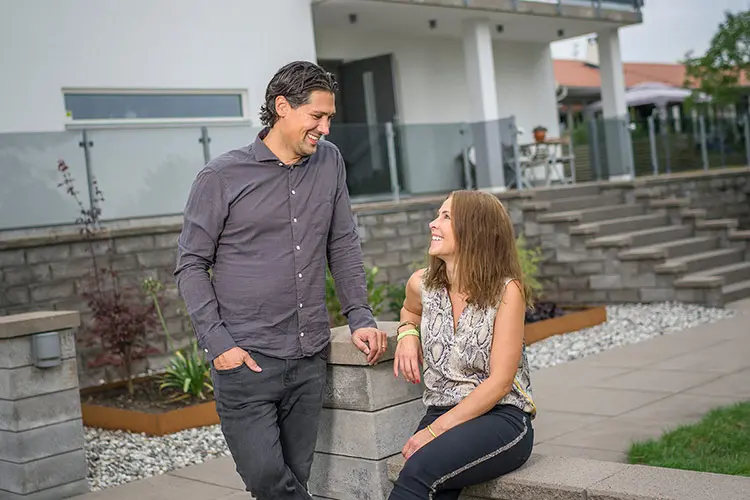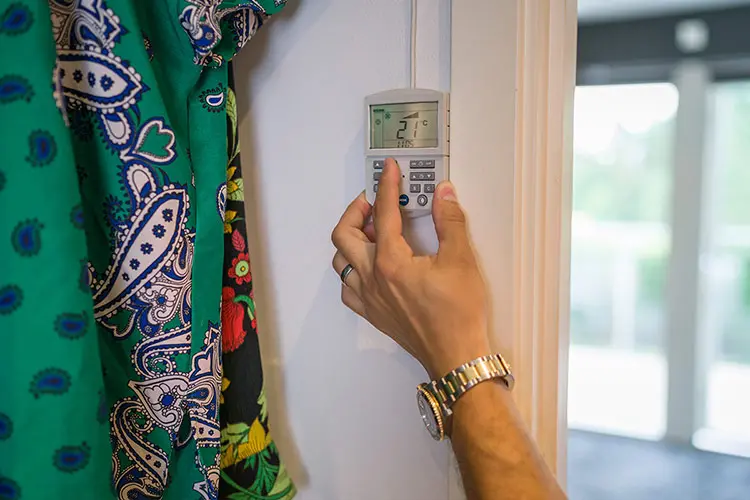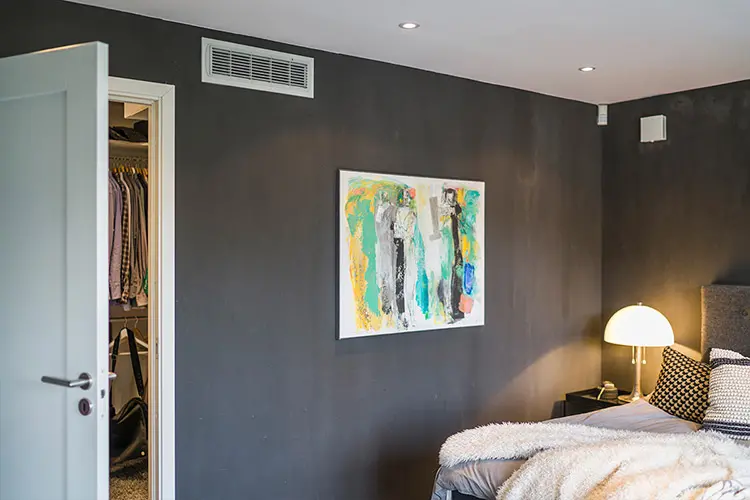Perfect indoor climate with free passive cooling from bedrock

Nestled in the greenery of Onsala you will find the Hofgren home. The modern concrete house from 2010 is the result of dreams, industrious planning and extraordinary energy efficiency. With airy spaces and generous natural light, the house has space for functionality and quality of life. And, with a perfect indoor climate. Not only with energy efficient ground-source heating, but with refreshing cooling. Especially appreciated on hot summer days.
”Modern architecture is actually rather challenging when it comes to creating a cool indoor climate. We like big south-facing windows, which make for a hot house in the summer. It’s a good thing we thought of cooling our home as early as in the design phase. Which we were particularly grateful for in the summer of 2018,” says Henrik Hofgren in Onsala outside Kungsbacka.
In 2010, Henrik moved into his beautiful home with his wife and their two children. A modern, spacious concrete house of 220 square metres in total. Outside the house, the garden and pool are nestled in greenery and healthy dose of tranquillity. Because the family decided early on to install energy efficient ground-source heating, they realised that they had an easy choice of ’add-ons’. With a few affordable technological additions, the family were able to realise their dream of having a heating system that could also provide cooling. Passive cooling, with its free energy from the generous bedrock.

Cool bedrooms x 3
Because cool air sinks, it is important to release it as high up in the house as possible. The Hofgren family decided to install fan coils to distribute cool air throughout the three upstairs bedrooms. More specifically, in the walk-in closet of the master bedroom and above the wardrobes in the children’s rooms. A solution that has been working flawlessly for eight years. ”I don’t dare think how the summer would have been if we didn’t have cooling in our house. It would have been at least 30 degrees in our bedrooms. We kept the rooms at 24 degrees. At times the kids decided to set their temperatures lower by using their control units. It is almost unfathomable that this cooling only costs what a 50-watt bulb costs to run,” says Henrik.

Amazing energy savings
Yes, you read that right. Cooling is produced by a menial input of 50 watts. This compared to the approximately 1,500 watts used by traditional air conditioners. Dramatic savings, to say the least. The secret is all the free cooling energy that the bedrock offers.
”Lowering the temperature by 6 to 7 degrees in the bedrooms is no problem thanks to the passive cooling. Not only do we get pleasing temperatures, but also a dry, crisp indoor climate. The entire family is extremely grateful that we made this investment. If we hadn’t done it from the beginning, we would have had to retrofit passive cooling or invest in another form of cooling,” says Henrik.
In the spring and early summer, the temperature of the boreholes is usually at around five degrees, and toward the end of summer, it is at about 10 to 12 degrees when cold is extracted for passive cooling. This means that the boreholes are ’charged’ with extra heat just in time to heat the house in September, thanks to the cold extraction in the summer. Double the benefit from ground-source heating with passive cooling. The cost for adding passive cooling to Henrik’s ground-source heating amounts to about SEK 40,000. This would include three fan coils for distributing the cool air, control units and the laying of cooling pipes.
”It’s easiest and cheapest to install passive cooling when you start building, but it’s actually pretty simple to retrofit it. Of course, this depends a bit on how long the pipes need to be and where the coils can be placed. Regardless, I highly recommend passive cooling to anyone who has groundsource heating and who wants to sleep in a cool and comfortable room at night, as well as have a lovely indoor climate during hot summer days,” Henrik Hofgren from Onsala concludes.
_

